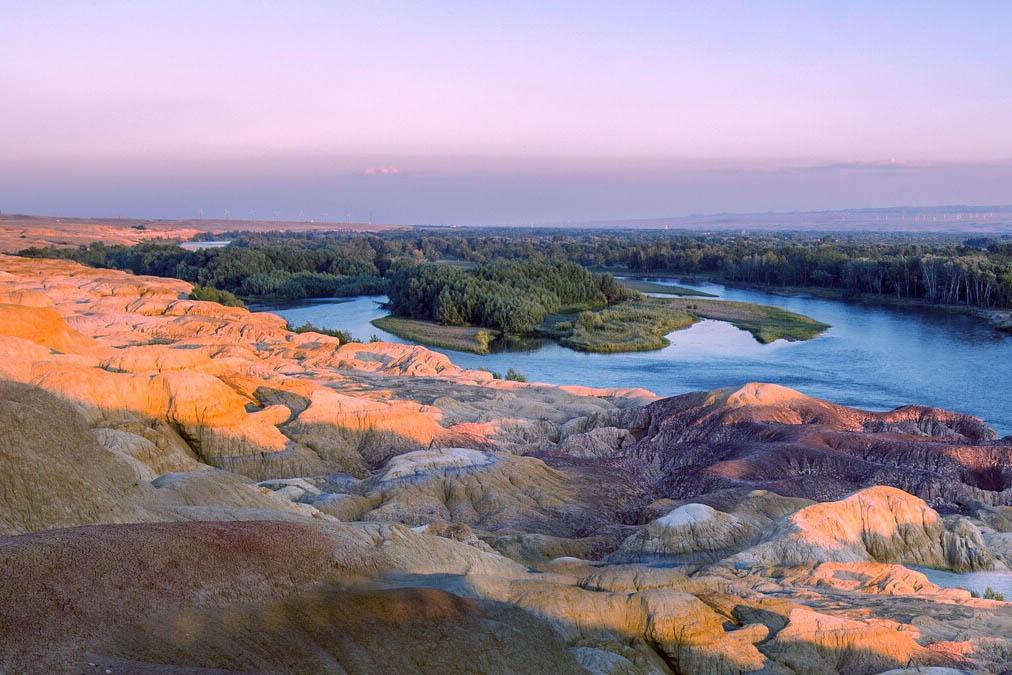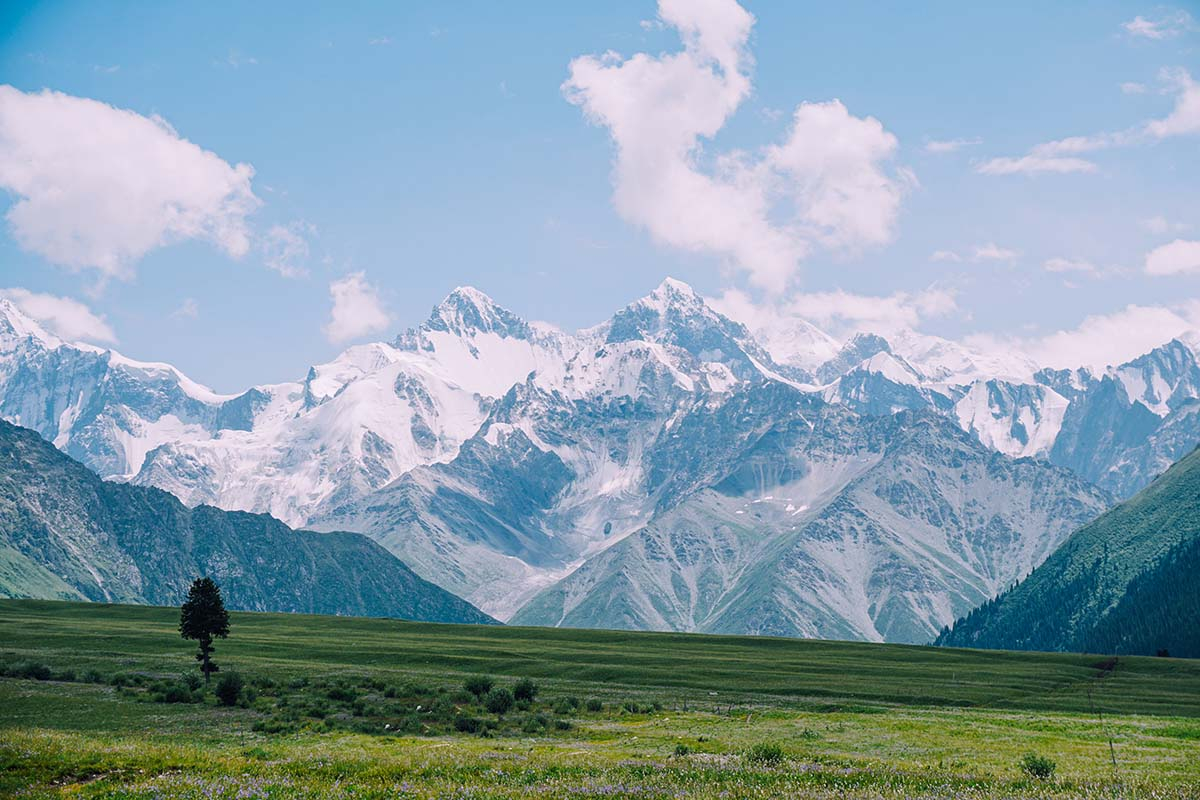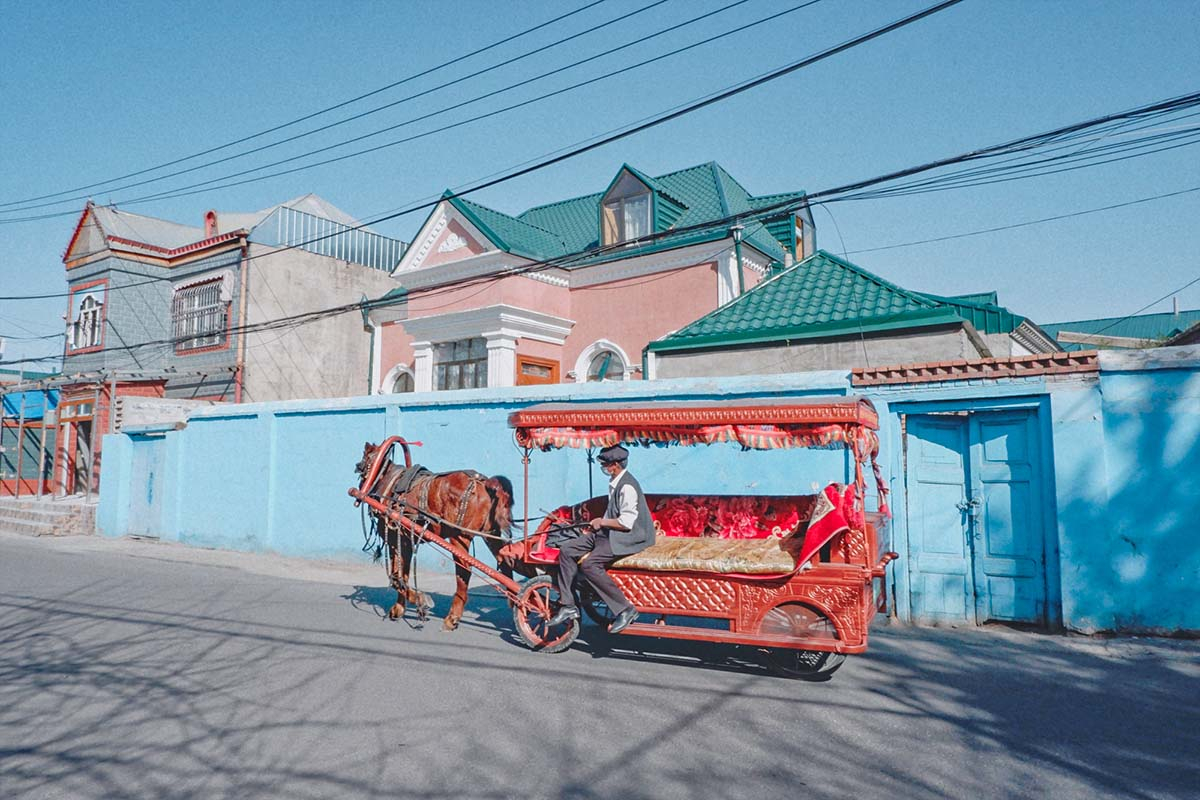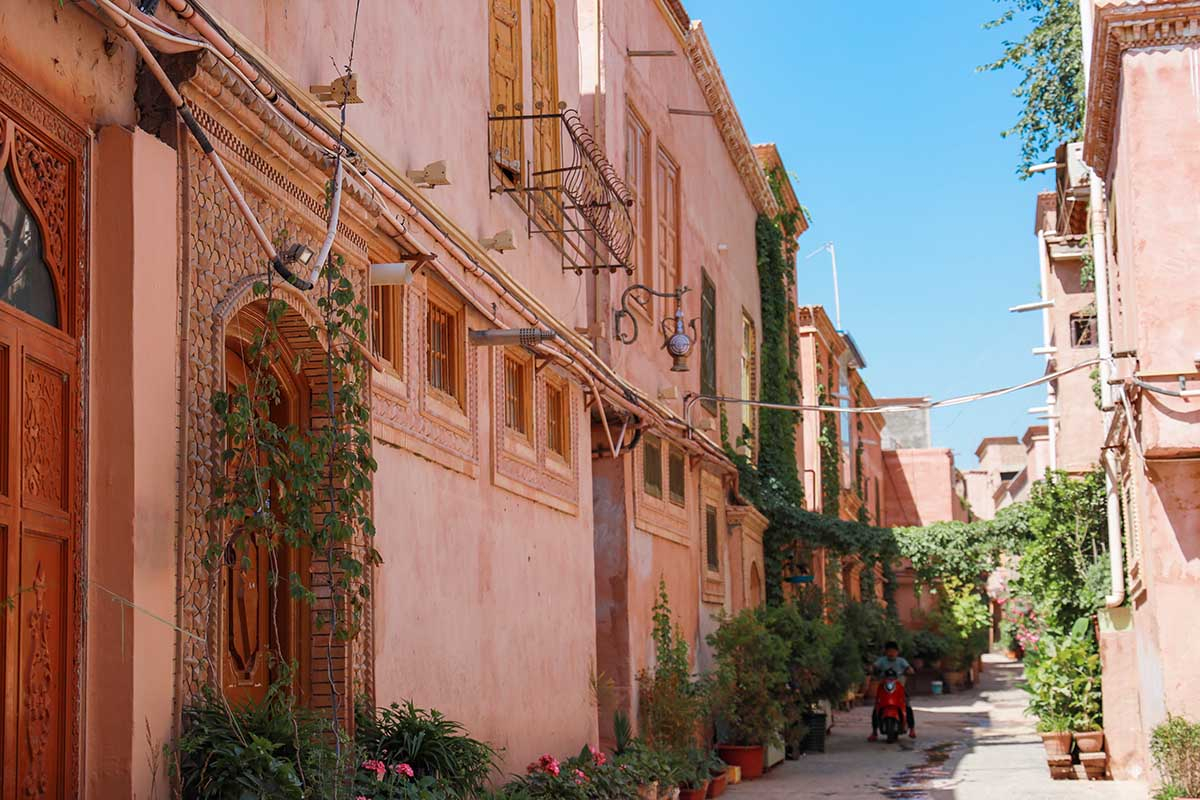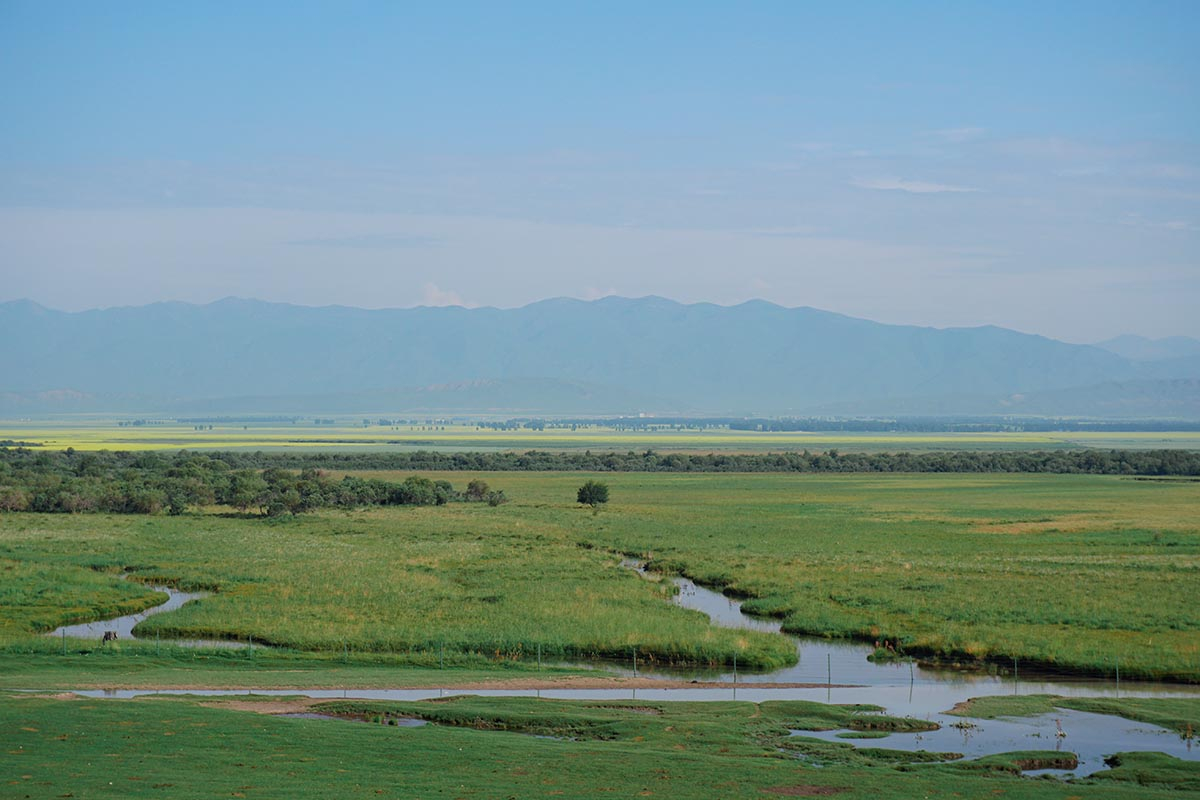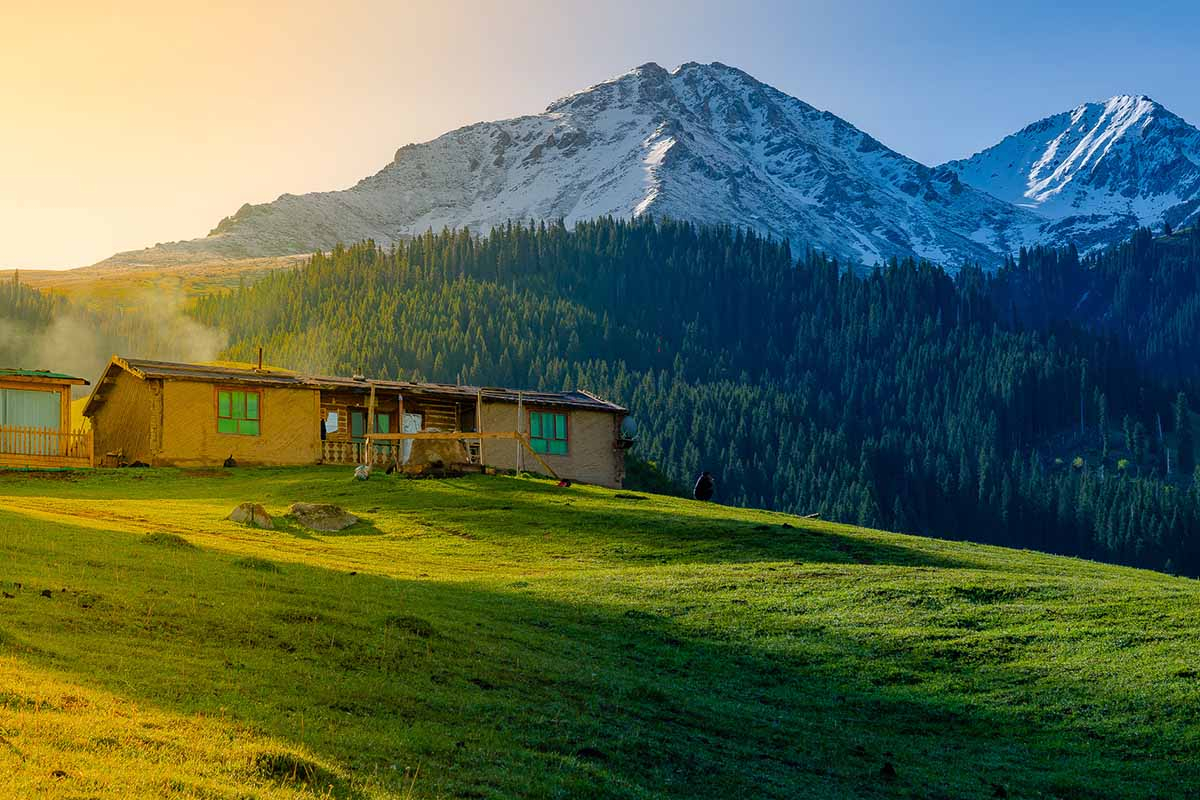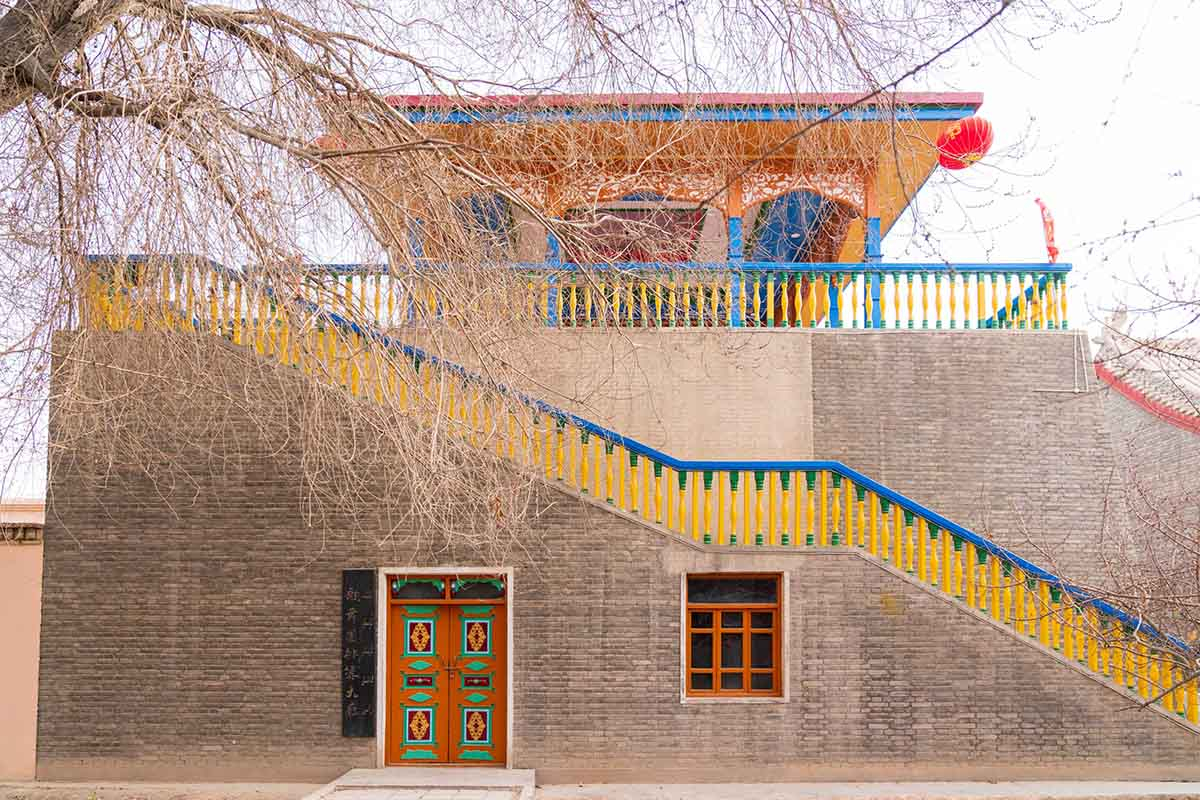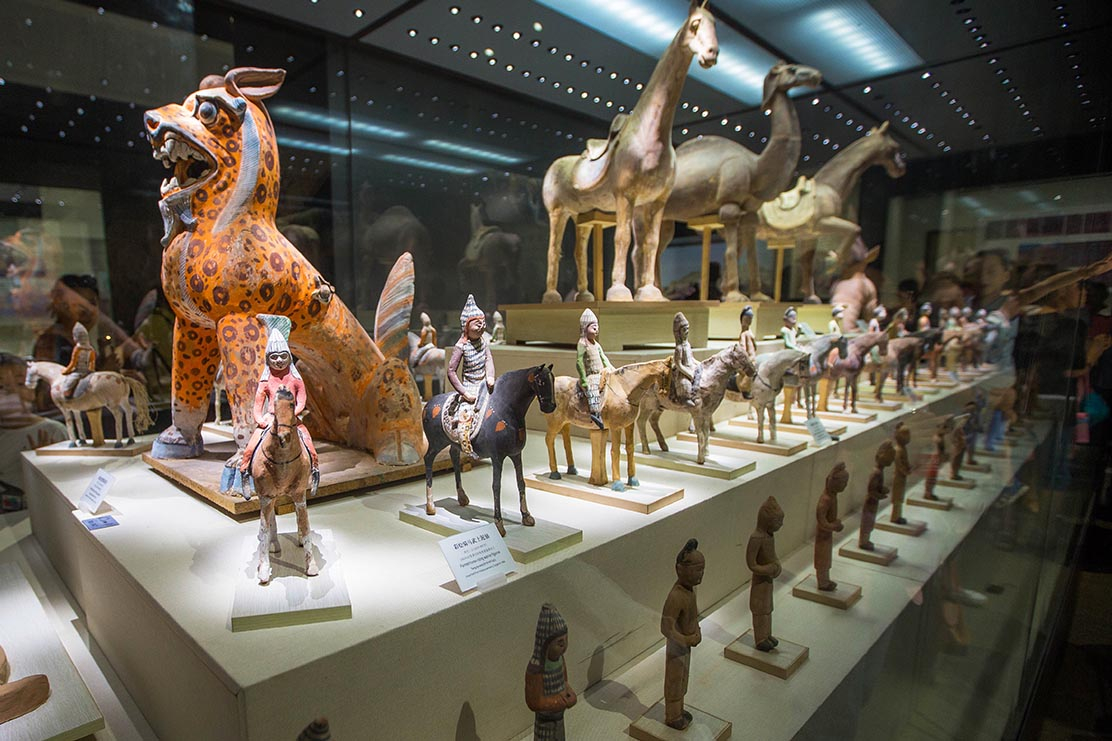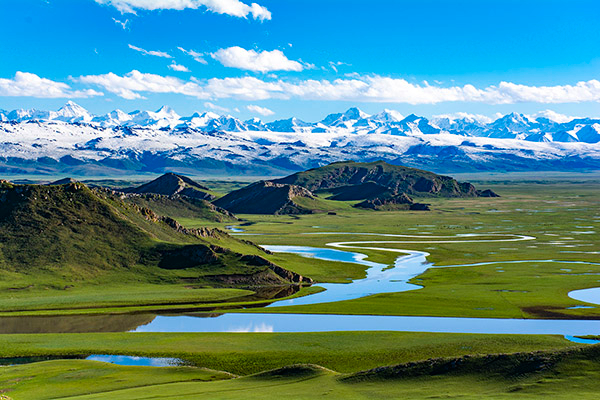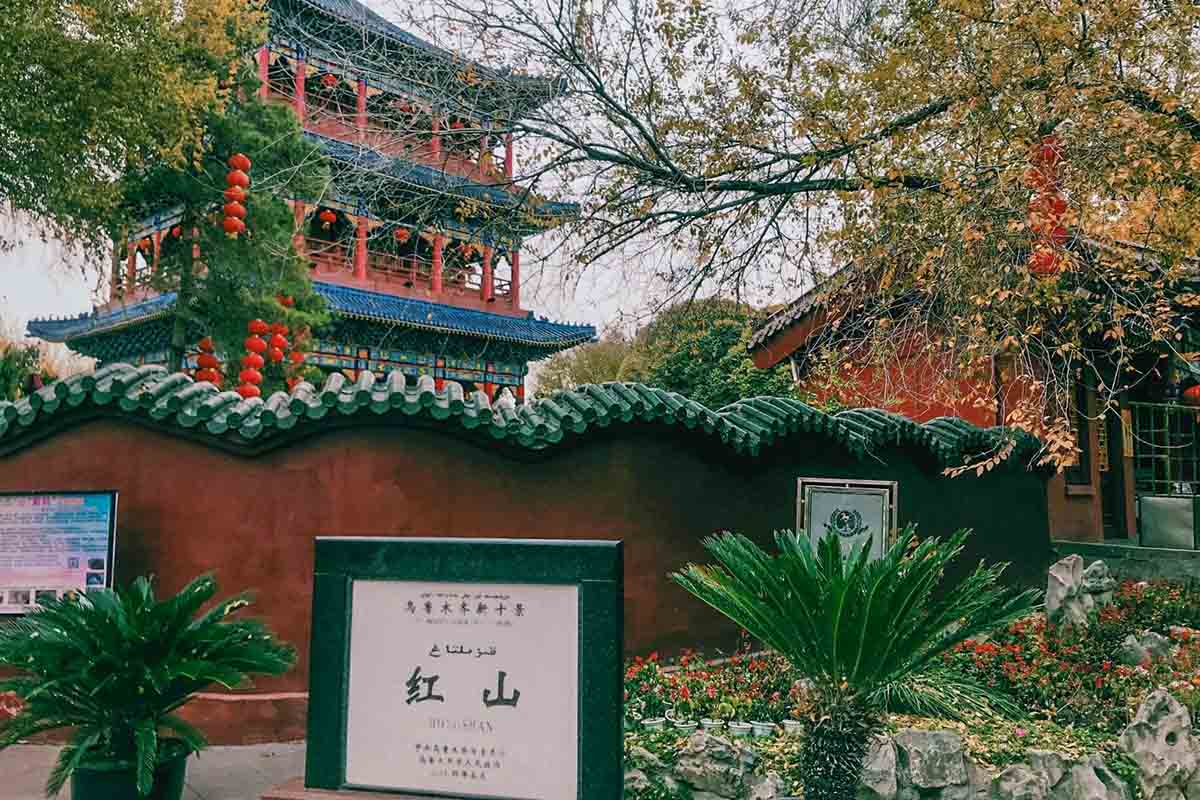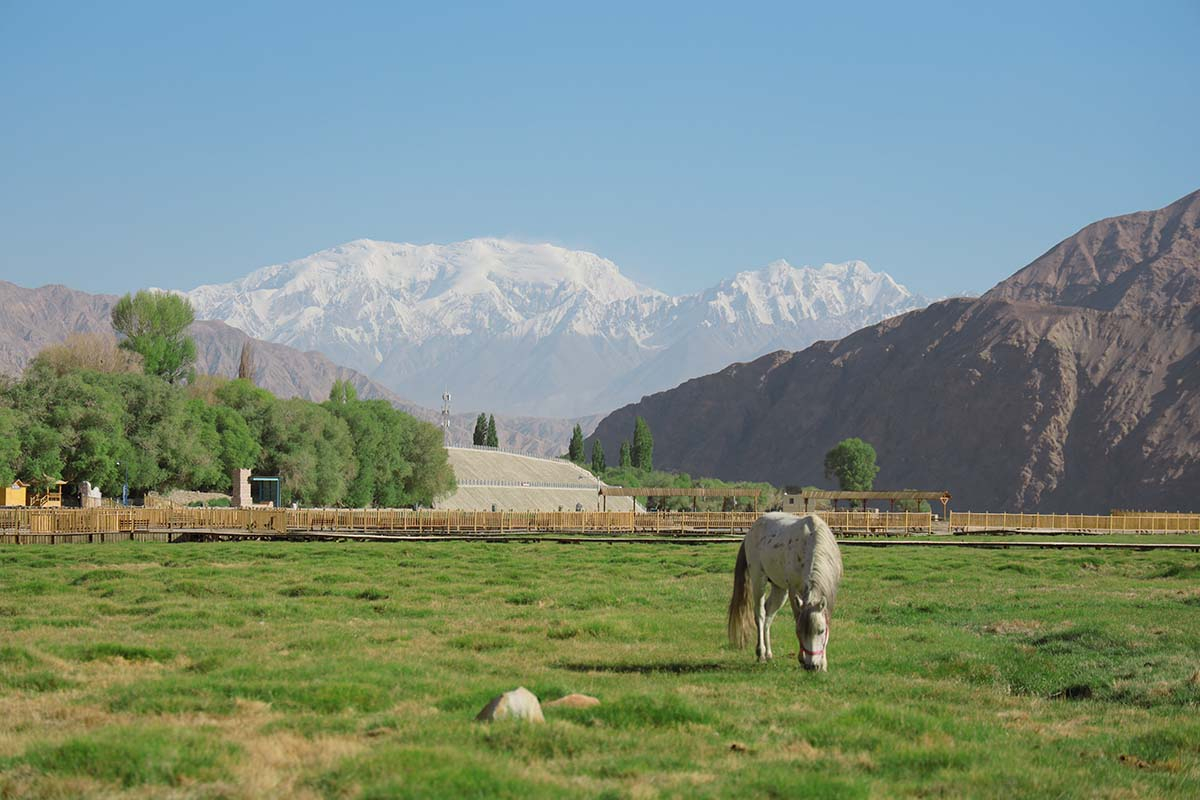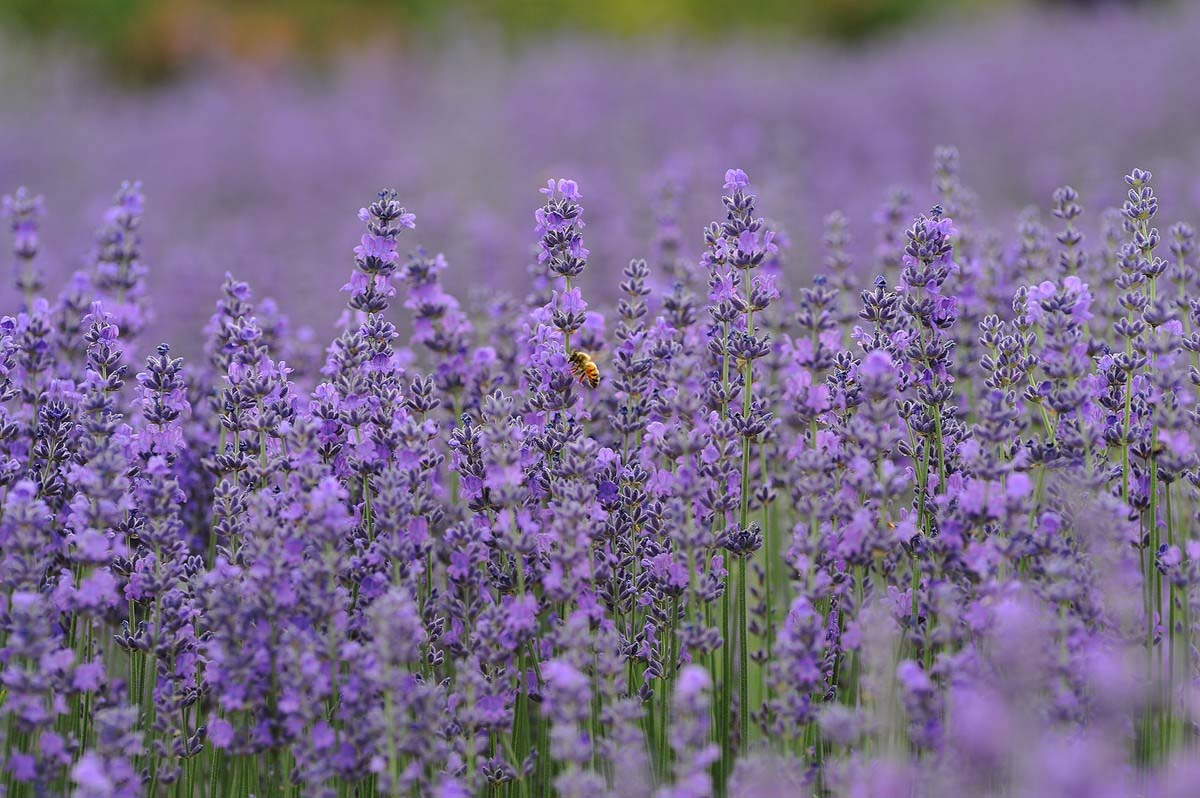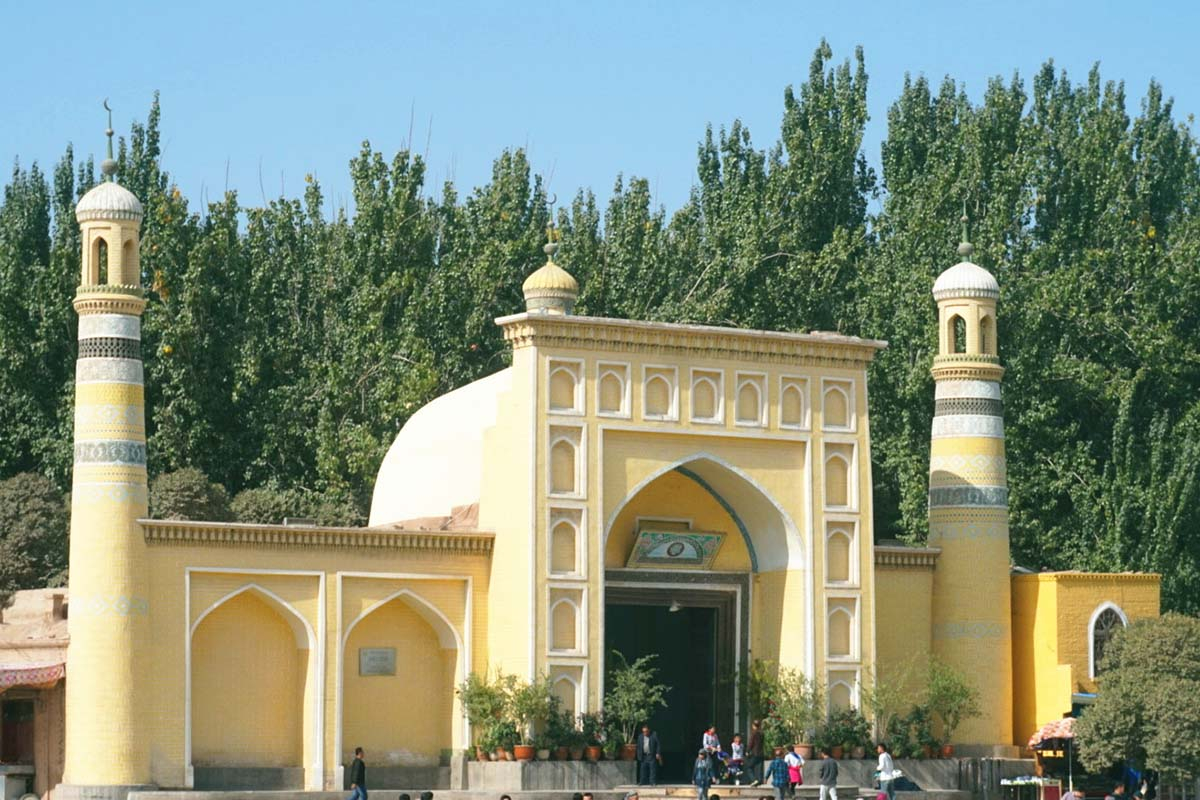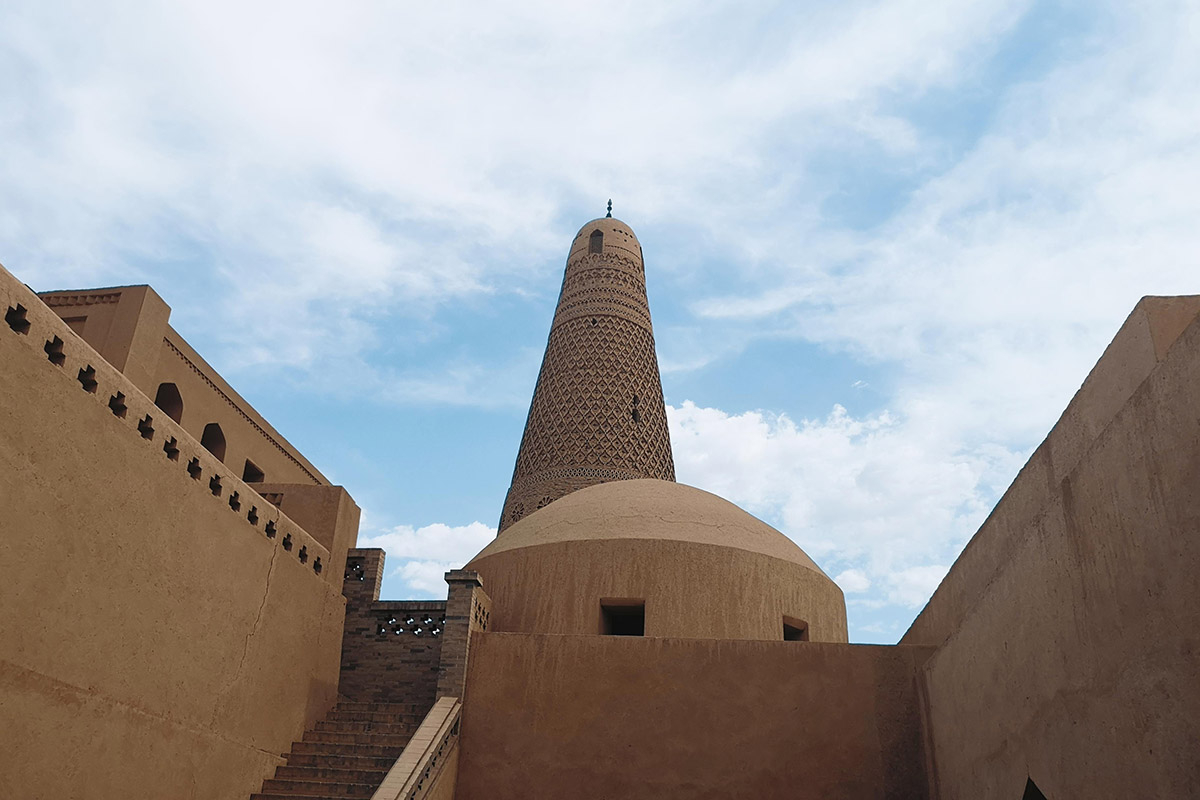Id Kah Mosque
Chinese name: 艾提尕尔清真寺(Ai Ti Ga Er Qing Zhen Si)
Location: West of Id Kah Square, City of Kashgar, Xinjiang.
Ticket: Entrance ticket CNY30.00
Estimated time of tour: 1-2 hours
Recommended time of visit: all year round
Nearby attractions: Kashgar Old Town, Apak Hoja Tomb,Kashi Grand Bazzar, etc.
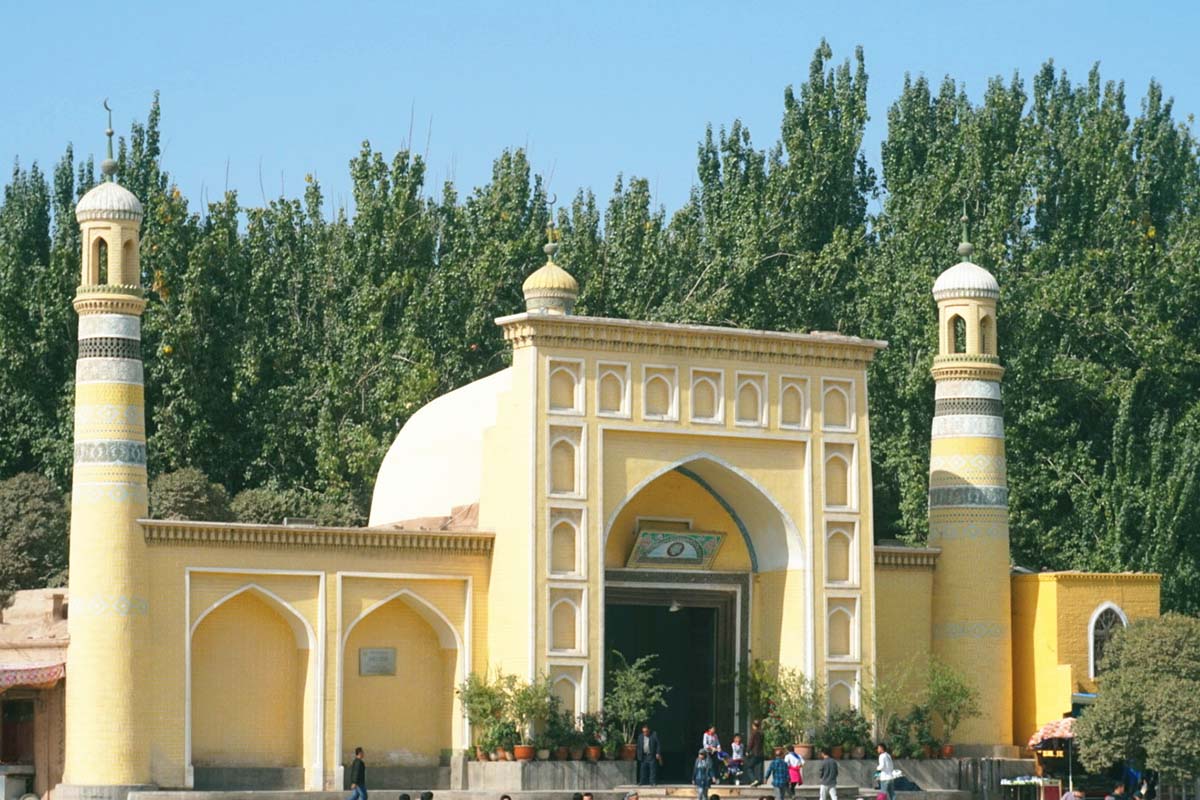
Sits at the heart of Kashgar City, the Id Kah Mosque (or pronounced as Ai ti ga er in Mandarin Chinese) is the largest mosque in the vast region of Xinjiang Uygur Autonomous Region and probably the most famous in China. It is now a place of worship and a famous tourist attraction. Its history dates back to 15th century when Shakesimirzha, the ruler of then Kashgar, had the mosque built on a tomb which said to be the burial place of an Arabic general, and it was extended to its present shape through several renovation works.
In 1798, a Muslim lady who planed to travel to nowadays Pakistan died in Kashgar. People used her leftover money to expand this mosque and named the site Id Kah, meaning a place of joy. Expansion works continued in early 19th century. The expansion and renovation works continues to the present day.
It now serves as the largest mosque in China. It attracts more than 10,000 worshipers for prayers on a Friday afternoon. The call to prayer booming from the mosque can be heard throughout the city center. As long as it is not prayer time or religious holidays, tourists are allowed into the mosque. When you visit mosques, you should always remember that both men and women should always have their arms and legs fully covered. The best time to visit is probably early to mid-morning when there are few worshippers here.
The mosque, 140 meters long from south to north and 120 meters from east to west, covers an area of 16,800 square meters and consists of the Hall of Prayer, the Doctrine-Teaching Hall, the gate tower, a pond and some other auxiliary structures.
The gate of the mosque, built of yellow bricks with the joints of the brickwork pointed with gypsum, has distinct lines. On both sides of the gate are eighteen-meter high round brick columns half embedded in the wall. On top of the columns stands a tower where the imam would call out loudly at dawn every day to wake up the Muslims and summon them to attend service in the mosque. In the tree-graced courtyard, there is a pond, and on its bank many pottery pots are placed, which are to be used by the Islam believers to clean their bodies. The main hall with wide eaves is 160 meters long and 16 meters wide. The hall's ceiling, with fine wooden carvings and colorful flower-and-plant painting patterns, is supported by one hundred carved wooden columns.
Notice:
This site is a place of worship; it is not open to visitors during praying time and religious holidays. Dressing codes are advised.
- HOTEST
- RECOMMEND

